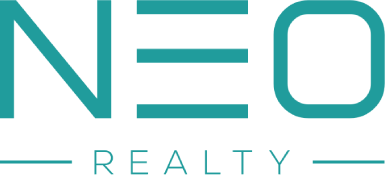Key Differences Between Cap Rate and ROI in Real Estate Investing
Unraveling the Key Differences Between Cap Rate and ROI in Real Estate Investing
Real estate investing is a dynamic and lucrative venture, drawing the attention of investors worldwide. Two crucial metrics that play a significant role in evaluating the profitability of a real estate investment are Capitalization Rate (Cap Rate) and Return on Investment (ROI). To make informed decisions, it's vital to understand the differences between these two metrics and how they impact your investment strategy.
Understanding Capitalization Rate (Cap Rate)
Defining Cap Rate
The Capitalization Rate, commonly referred to as Cap Rate, is a financial metric used to assess the potential return on a real estate investment. It's calculated by dividing the property's net operating income (NOI) by its current market value. The Cap Rate is expressed as a percentage and helps investors compare different investment opportunities.
Calculating Net Operating Income (NOI)
Net Operating Income (NOI) is the annual income generated by a property, minus its operating expenses. To calculate NOI, you should consider the total rental income, any additional revenue streams (e.g., parking fees, laundry facilities), and subtract the property's operating expenses, such as maintenance, property taxes, and insurance.
Pros and Cons of Cap Rate
Using Cap Rate as an investment metric has its advantages and disadvantages. The primary benefit is that it allows for easy comparison between different properties, as it normalizes the potential return based on the property's value. However, the drawback is that Cap Rate doesn't account for financing costs, which can significantly impact an investment's profitability.
Delving into Return on Investment (ROI)
Defining ROI
Return on Investment (ROI) is a widely used financial metric that measures the profitability of an investment. It's calculated by dividing the net profit generated by an investment by the initial investment cost. ROI is expressed as a percentage and helps investors evaluate the efficiency and potential returns of various investments.
Calculating ROI in Real Estate Investing
To calculate ROI in real estate investing, you need to consider several factors, including the initial investment cost, any additional expenses (e.g., renovation costs), the income generated by the property, and any appreciation or depreciation in the property's value. Additionally, financing costs, such as mortgage interest, should be taken into account when calculating ROI.
Pros and Cons of ROI
ROI is a versatile metric that offers a comprehensive view of an investment's profitability, considering both income and appreciation. However, it can be more complex to calculate than Cap Rate due to the numerous factors involved. Additionally, ROI doesn't normalize for the property's value, making it harder to compare different investment opportunities.
Cap Rate vs. ROI: Key Differences and Applications
While both Cap Rate and ROI are essential metrics for evaluating real estate investments, they serve different purposes and should be used in conjunction with each other.
- Investment Purpose
- Calculation Method
- Comparability
- Risk Assessment
Cap Rate is best suited for comparing potential investments and determining the relative risk associated with different properties. In contrast, ROI is more focused on measuring the overall profitability of an investment, taking into account both income and appreciation.
Cap Rate is calculated using the property's net operating income and market value, while ROI considers a wider range of factors, including financing costs and property appreciation.
Cap Rate allows for easy comparison between properties due to its normalization for property value, while ROI can be more challenging to compare due to its consideration of various factors.
Cap Rate can help investors identify higher-risk investments, as a higher Cap Rate may indicate a property with a potentially higher return but also increased risk. ROI doesn't directly account for risk factors and is more focused on overall profitability.
Conclusion
Understanding the differences between Cap Rate and ROI is crucial for making well-informed decisions in real estate investing. While Cap Rate is valuable for comparing properties and assessing relative risk, ROI provides a comprehensive view of an investment's profitability, including income generation and property appreciation.
To maximize your success in real estate investing, it's essential to consider both Cap Rate and ROI when evaluating potential investment opportunities. By using these metrics together, you can gain a better understanding of the potential returns and risks associated with each property, enabling you to make informed decisions that align with your investment goals and risk tolerance. Ultimately, a thorough analysis of these key financial metrics will empower you to make smarter investments and achieve long-term success in the ever-evolving world of real estate.


